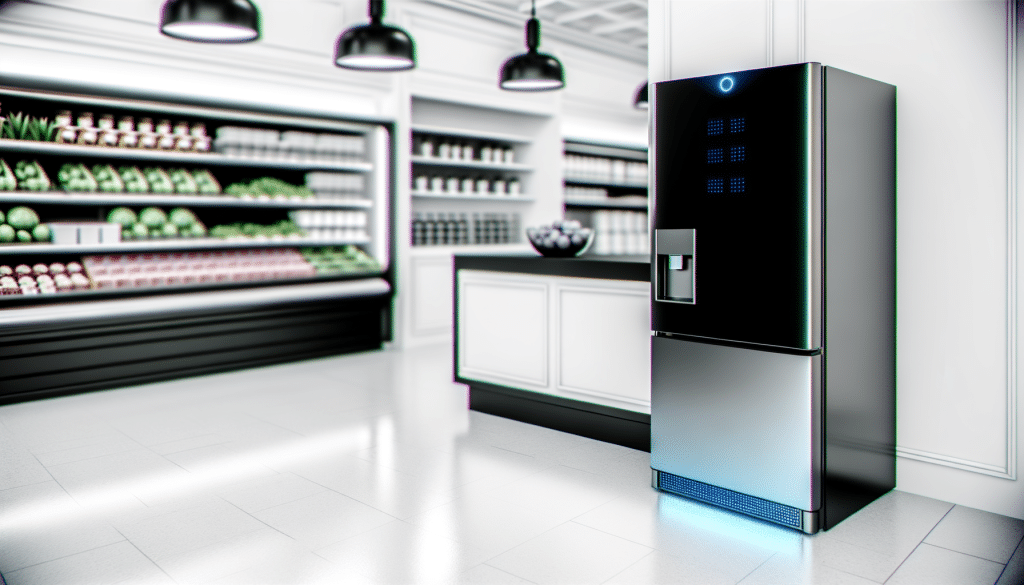In recent years, retail has undergone a quiet but powerful transformation, and the cooler, of all things, is at the center of it. What used to be a simple refrigerated box full of convenient goodies, is now a hub of technology. Powered by artificial intelligence and real-time data, the smart cooler is helping businesses offer faster, smarter, and more flexible service to their customers. It’s the ideal unattended retail solution for businesses looking to offer round-the-clock access without staffing.
From office buildings and hotels to airports, train stations and university campuses, smart coolers are showing up in more places than ever. But what makes them different from traditional vending machines? And why are so many retailers investing in this tech-forward solution?
A Cooler That Knows What’s Inside
At the heart of every smart cooler is a mix of sensors and software that work together to recognize what products are on the shelf. When a customer swipes a card to unlock the door and takes something out, the system tracks what was removed in real time. No barcode scan needed. The customer simply grabs what they want, closes the door, and walks away.
Behind the scenes, the cooler logs the transaction and sends updated inventory data to the operator. That means fewer surprises when it comes to restocking, and better insights into which products are moving and which aren’t.
Some systems go even further, using AI to automatically recognize new products based on weight and position, with no setup or onboarding required. If you’re running a retail space that needs to stay agile, this kind of self-learning technology can make a real difference.
More Than Just Convenience
Yes, smart coolers are convenient. But that’s only part of the story. They also help solve some of the biggest pain points in retail, like staffing, food waste, and operational overhead.
With a smart cooler, stores can stay open 24/7 without extra employees. Smart coolers make it possible to offer fresh, healthy food in places that traditionally couldn’t support it, like office lobbies, transit hubs, or underserved urban areas. They’re transforming ‘food deserts’ into zones of fresh opportunity. And because these systems track what’s been sold and what’s about to expire, there’s far less waste.
Some platforms even make it possible to retrofit existing coolers with intelligent shelves, so retailers don’t need to replace their entire setup. That kind of flexibility can be a game-changer, especially for businesses looking to scale quickly or pilot a new offering in a low-risk way.
If you’re exploring ways to expand your unattended retail footprint, integrating smart coolers into your environment is a strong place to start.
From Fridge to Forecast
One of the biggest benefits of smart coolers often goes unnoticed: the data. By tracking not just sales, but also door openings, product interactions, and replenishment needs, operators get a clear picture of how their products are performing in real-world settings.
You can see which items are most popular at different times of day, which combinations of products are often purchased together, or even how often people open the cooler without buying anything. Over time, that kind of real-time insight helps shape smarter decisions about product mix, pricing, and layout.
Thanks to AI & IoT, retailers reduce waste, improve restocking efficiency, and create better experiences for their customers with minimum effort.
The Coolest Shift in Retail
The smart cooler isn’t just another piece of equipment, it’s part of the broader shift toward autonomous, data-driven retail we see today. AI and IoT are transforming retail by enabling real-time insights, automation, and personalization. From smart shelves that track inventory to AI-powered recommendations.
As these technologies become more accessible, expect to see more businesses using them not just to cut costs, but to deliver smarter services and a better shopping experience. While the technology behind them is sophisticated, the experience for the end user couldn’t be simpler: swipe, grab, go.
Sometimes, the biggest changes in retail come from the quietest places. In this case, it’s also quite cool.
